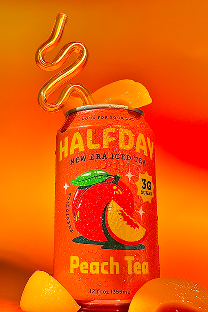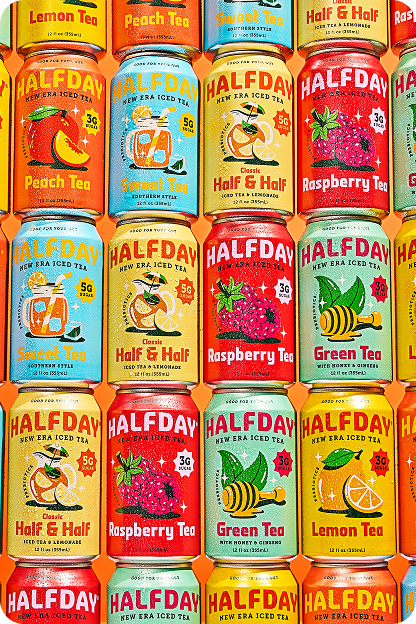
Benefits of Adding a High Fiber Smoothie to Your Diet and Recipe Ingredients
We’ve been told since we were little that we should eat more fiber. Tired? Eat more fiber. Upset stomach? More fiber. No, this wasn’t a ploy to get you to eat more vegetables. Fiber is essential for a healthy digestive system, but why is that?
Fiber is found in plants and is often referred to as the bulk material. That’s because our bodies cannot digest fiber, but it plays another role. Fiber, or dietary, fiber is an important part of any diet. It’s not too hard to get fiber into your diet since there are so many foods that contain it such as whole grains and many different fruits.
Life gets busy and it can be hard to keep up with everything we’re supposed to include in our diet. One way to do that is to start drinking a high-fiber smoothie every day. Let’s look at what dietary fiber is, and how a high fiber smoothie can help improve your gut health.
What is Dietary Fiber?
Dietary fiber is most commonly found in plants and is sometimes referred to as plant fiber. Fiber is a carbohydrate that can’t be digested. Typically carbohydrates are broken down and absorbed into your body as sugar molecules. Fiber is the part of the food that your body can’t digest, so other parts of your body can use it.
When you intake fiber, it stays as-is for the most part. While it might sound like not being able to digest fiber is bad, it’s actually a very good thing and important for digestive health. Fiber regulates how your body uses sugar that it’s getting from other foods. It also works to manage your hunger and blood sugar, so it can help you lose weight.
It’s suggested that children and adults both should be having at least 20 to 30 grams of fiber a day. The average American is usually only getting around 15 grams a day. There are two types of fiber, soluble ad insoluble fiber.
Soluble Fiber
Soluble fiber dissolves in water, so it will dissolve in your gut. It can help to slow down how quickly food is moving through your digestive system. Soluble fiber can also lower glucose levels and lower blood cholesterol.
Foods With Soluble Fiber
- Oatmeal
- Bananas
- Nuts
- Beans
- Lentils
- Apples
- Blueberries
Insoluble Fiber
This type of fiber doesn’t dissolve in water, is referred to as roughage, and can help you stay regular if you’re dealing with constipation.
Foods With Insoluble Fiber
- Wheat
- Whole wheat bread
- Legumes
- Brown rice
- Carrots
- Cucumbers
- Tomatoes
- Corn
Benefits of a High-Fiber Diet
Fiber is important to your diet, and if you are experiencing problems like bloating, constipation, and other gut health-related issues you may want to try a high-fiber diet. There are many benefits to this type of diet.
Weight Loss
Increasing your fiber intake can help you lose weight. If you up your fiber intake to around 30 grams a day, you can shed quite a few pounds. This is because food that is high in fiber will keep you feeling full for longer. The fiber in the body will also keep you from absorbing higher amounts of calories from the foods you eat.
Once you lose weight, continuing a high-fiber diet can help you keep the pounds off, as well. Since fiber helps you stay full longer, you won’t be tempted to overeat, either.
Lower Your Risk of Type 2 Diabetes
A diet high in fiber can help you lower your risk of type 2 diabetes. According to a study done at Harvard, a diet low in fiber doubled the risk of type 2 diabetes.
Reduce Constipation
Everyone has experienced constipation at least once, and it’s never fun. Drinking a high-fiber smoothie can help you relieve this gastrointestinal issue if you’re experiencing it commonly.
Lower Your Risk of Heart Disease
A diet high in fiber can also help lower your risk of heart disease. A Harvard study showed that those with a high dietary fiber intake had a 40% lower risk of heart disease.
Fiber is Good for Gut Health
Your digestive system is home to trillions of good bacteria, often referred to as probiotics. The good bacteria in your gut help you maintain a healthy digestive system, and without them, you could have serious health problems. When you eat fiber, since you don’t digest it, it leaves food for the bacteria to eat and stay energized. Keeping the good bacteria well-fed will in turn keep your gut balanced and avoid issues such as bloating and constipation.
Tips for Starting a High Fiber Diet
If you’re ready to start a high-fiber diet, there are some things you should know. Here are some tips to help you get started.
Start Slow
When you start a high-fiber diet, it’s important to take it slow. Adding too much dietary fiber too quickly can make gastrointestinal issues worse. Add fiber into your diet gradually to avoid bloating and gas problems.
Stay Hydrated
Fiber is at its prime when you’re well-hydrated, so drink plenty of fluids when starting a high fiber diet. Not drinking enough fluids could result in constipation, or make matters worse if you’re already experiencing it. Drinking a high-fiber smoothie is a great way to make sure you’re staying hydrated while increasing your fiber intake.
Eat Whole Grains
It’s important to check the ingredients when starting a high-fiber diet. Make sure that whole grains are at the top of the list. Opt for whole-grain bread, brown rice, and anything you can get your hands on that’s made with whole grains.
Increase Your Fruit Intake
Choose fruits that are high in fiber to add to your diet. They can also be enjoyed in a high-fiber smoothie! Fruits like apples, bananas, raspberries, and mangoes are great sources of fiber. While drinking a high-fiber smoothie is great, be sure to also eat fruits with the skins on them as well to get maximum fiber intake.
High-Fiber Smoothies
One way to start incorporating more fiber into your diet is to drink high-fiber smoothies. This is an easy way to get all your daily fiber in one fell swoop so you don’t have to worry about it the rest of the day. Green smoothies are one of the best types of high-fiber smoothies that you can drink.
High fiber smoothies are jam-packed not only with fiber, but other essential nutrients you need throughout the day. They are typically a blend of fruits and vegetables and can be used as a dietary supplement. Drinking a high-fiber smoothie in the morning is a great way to get energized for the day while ensuring you’re getting the fiber you need.
The best part of making a high fiber smoothie at home is getting to put whatever you want in it. Typically, you should be adding things like spinach, kale, and other leafy greens for fiber. It’s important to be careful not to add too much sugar to your high fiber smoothie, as well.
Foods to Put in Your High Fiber Smoothie
- Berries such as blueberries, strawberries, and blackberries
- Chia seeds
- Bran
- Nuts such as almonds
- Leafy greens like spinach and kale
Adding a source of protein such as peanut butter and flaxseeds makes a high-fiber smoothie a perfect breakfast. You will also help yourself with hydration by drinking a high-fiber smoothie, as well.
Start simple and choose your favorite fiber-rich fruits, leafy greens, and a protein source. Add milk, yogurt, or whatever you prefer and do some experimenting. There are also tons of blogs to check out online with high-fiber smoothie recipes to help you get started.
Getting in the habit of drinking a high-fiber smoothie every day will help you improve your gut health and alleviate problems like bloating. It’s also a great way to make sure you’re having breakfast in the morning even if you don’t have time to sit down and have a meal.
Other Tips for a High-Fiber Diet
Along with your high-fiber smoothie, adding other foods to your diet can help you make sure you’re getting plenty of fiber and nutrients. Switch to whole grains in your bread, bagels and rice. You can also bake your own goods with whole grains to ensure a higher fiber content.
If you’re a tea drinker, try Halfday Tea Tonics. Each can has 5g of plant fiber and is a healthier alternative to most commercial teas like Snapple and Arizona Iced Tea. They’re great for your gut health, too!
Conclusion
To sum it up, fiber is crucial if you want to improve your gut health. If you’re busy and find yourself unable to keep track, try a high fiber smoothie in the morning to make sure you’re getting your daily intake.
Dietary fiber has many benefits including promoting weight loss, lowering the risk of Type 2 Diabetes, and promoting gut health. Making sure your gut is healthy will help you alleviate problems like constipation and bloating.
High fiber smoothies are easy to make, and you can customize them however you’d like. All you need is leafy greens, high-fiber fruits, and a protein source. Try making one today!




